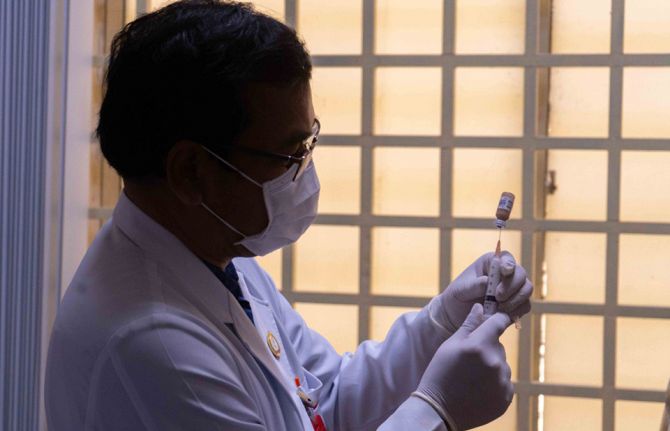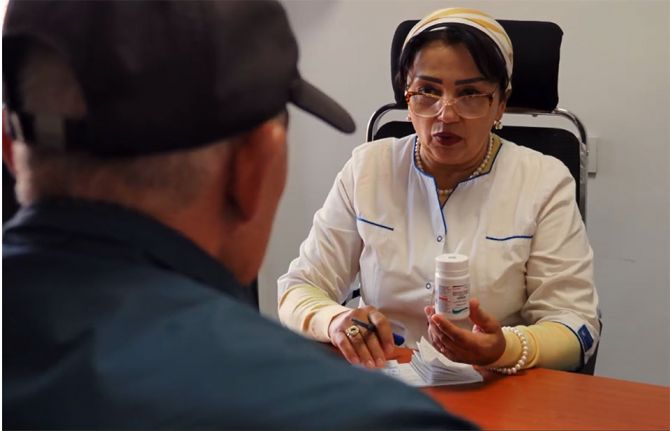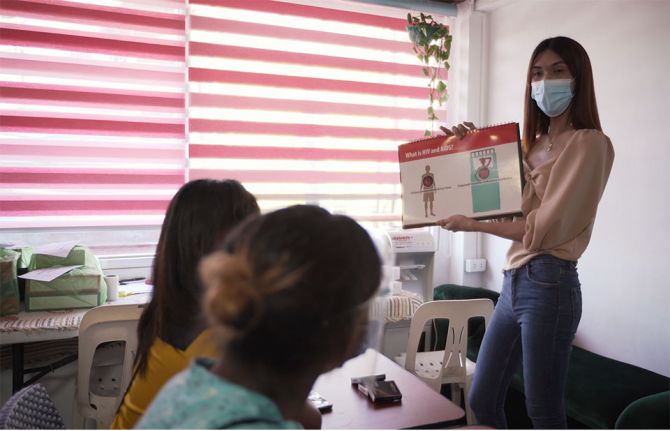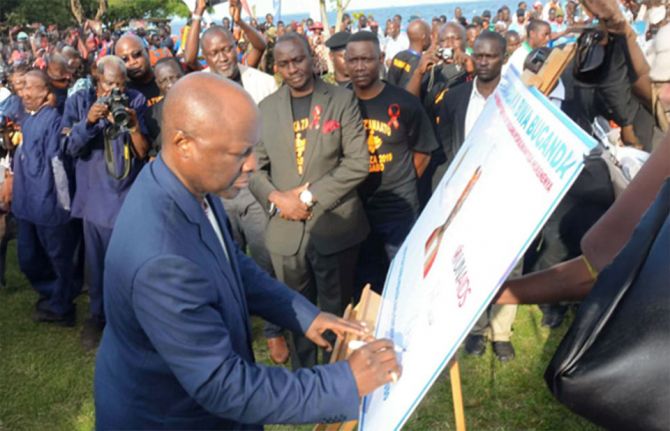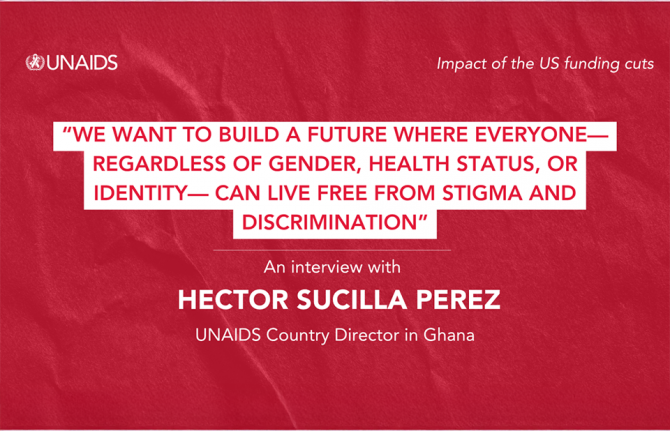
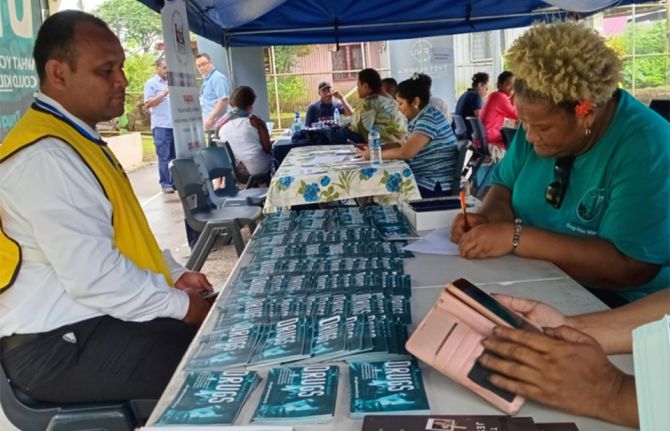
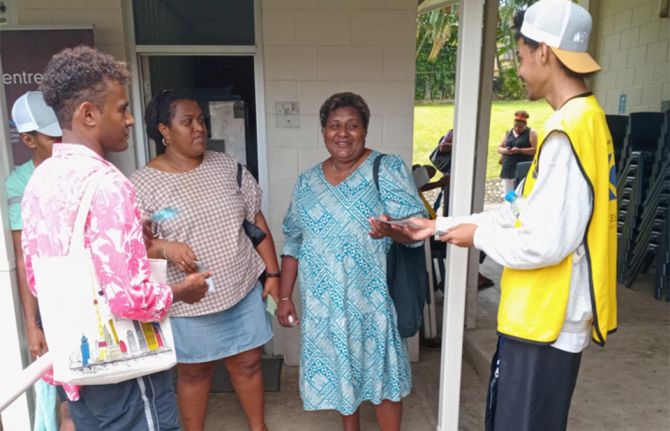
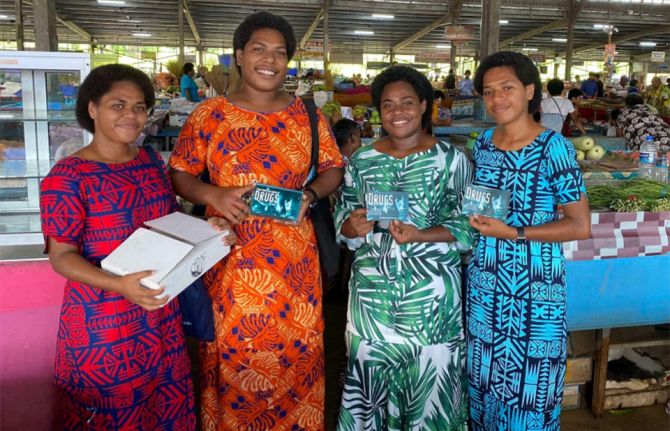
Feature Story
As HIV infections soar due to injecting drug use, harm reduction should be a priority in Fiji
25 July 2025
25 July 2025 25 July 2025This story first appeared in the UNAIDS Global AIDS Update 2025 report.
Kalesi Volatabu, founder of DrugFree World Fiji, breaks the ice at drug awareness sessions by sharing her shocking story.
When she was 13, her parents sent her to relatives in Sydney for what she thought was a vacation. In fact, they expected her to stay there, work and send money back to them in Fiji. She ended up on her own with no passport, no schooling and no care. She spent three years on the streets. Boyfriends abused her. She was raped twice. She attempted suicide three times. By the age of 17, she was a mother.
“Marijuana did nothing for me,” she says. “My drug of choice was meth. I needed to go to the hardest drug to numb the pain I was going through ... to fill the void. When I share this in Fiji today in villages, schools and churches, it gives people the power to say, ‘This is what happened to me.’ It is a healing journey.”
Kalesi leads the one community organization exclusively committed to addressing the drug use fuelling Fiji’s ballooning HIV epidemic.
Since 2014, number of new HIV infections in Fiji has risen by an alarming 10-fold. UNAIDS estimates that in 2014, there were fewer than 500 people living with HIV in Fiji. Just 10 years later, that number was 5900 [4500–8900]. In 2024, only 36% [27–54%] of people living with HIV in Fiji were aware of their HIV status, and only 24% [18–36%] were receiving treatment.
Preliminary data for 2024 from the Ministry of Health show that among people newly diagnosed with HIV who are currently receiving antiretroviral therapy, half contracted HIV through sharing needles.
Responding to the sharp increase in new diagnoses, the Government of Fiji declared an HIV outbreak in January 2025. The HIV Outbreak Response Plan and the previously announced Counter Narcotics and HIV Surge strategies call for the introduction of harm reduction programmes for people who inject drugs. Currently there are none.
Although there is agreement in principle with the introduction of needle–syringe programmes, moving towards implementation has been more challenging. “We still need to raise awareness,” says Kalesi. “It is not just about giving out needles. It is about education. But there are so many myths and misconceptions. We have to educate the leaders first. When the indigenous chiefs call, people will follow. Then there are the churches. Last but not least, the Government.”
Medical Services in the Pacific (MSP) Fiji is prepared to implement a needle–syringe programme. The non-profit-making organization provides a broad range of sexual and reproductive health services. It is already supporting the scale-up of much needed HIV prevention, testing and linkages to care. Beyond its clinics in Labasa, Lautoka and Suva, it deploys an outreach team of clinicians and counsellors to the field. A mobile clinic goes to hotspot areas to provide a package of HIV and noncommunicable disease services in areas with high levels of injecting drug use.
“Since we started providing point-of-care (rapid) screening last year, the numbers have continued to escalate,” says MSP Fiji Country Director, Railala Nakabea. “It is not only in the cities and towns. We are also seeing positive cases in rural communities. Most of the cases we detect are among people who inject drugs.”
MSP Fiji Medical Officer, Kesa Tuidraki, reiterates the importance of harm reduction alongside longer term and more widely accepted plans for the construction of a drug rehabilitation facility. “It is not only HIV,” she says. “We also have increasing hepatitis C infection, which is even more easily spread through sharing injecting equipment. We need to have harm reduction programmes in place as soon as possible. Rehabilitation does not address the immediate public health emergency.” She acknowledges the importance of partnering with an organization of people with lived experience to more effectively serve the community of people who use drugs.
For Kalesi Volatabu, it is critical that stakeholders work together to design a tailored approach. “We definitely need harm minimization strategies, but we have to contextualize the programmes. What would work in the western context will not work in Fiji. You need to speak the language of your audience. It must be driven by the people and owned by the people.”
Global AIDS update 2025
Region/country

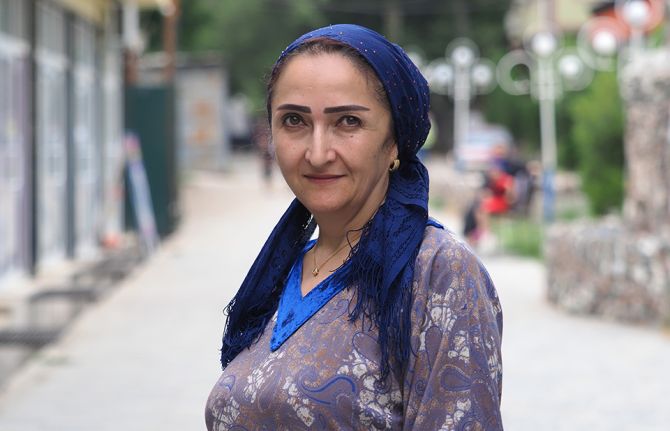
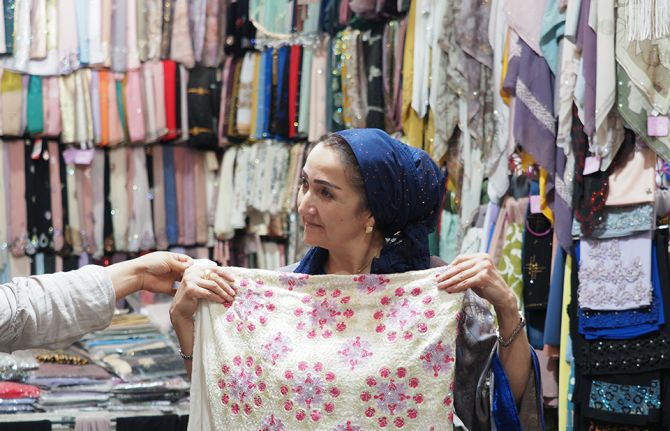
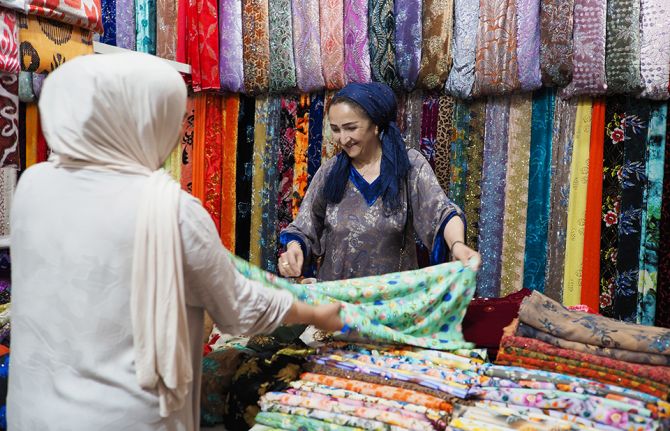
Feature Story
Power to earn and live—overcoming inequalities and supporting women living with HIV in Tajikistan
23 July 2025
23 July 2025 23 July 2025This story was first published in the UNAIDS Global AIDS Update 2025 report.
The day for Safargul begins at 04:00 and rarely ends before midnight. She juggles the demands of raising four children, tending a vegetable garden and managing the household in the small city of Kulyab in Tajikistan. Twice a week, she works at the local AIDS centre as a peer consultant. She supports women newly diagnosed with HIV, helping them understand the importance of starting treatment and not giving up hope.
Safargul has been living with HIV since 2006. No one in her community knows her HIV-positive status. “It would mean the end of normal life,” she says. “People would exclude me from gatherings, from everyday conversations.”
Her husband and eldest son were migrant workers abroad—just like the husbands of many of the women she now supports. “I see young women infected by their husbands and refusing treatment because they fear someone in the family might find out. They do not know enough, and they have no power to protect themselves,” she says.
Safargul is worried that most of these women are economically dependent on their husbands and their families. In Tajikistan, one of the poorest countries in central Asia, nearly 30% of gross domestic product comes from remittances, with many men migrating to Kazakhstan or the Russian Federation for work. According to the National AIDS Center, in 2015 one in eight new HIV cases was linked to male labour migration, but that figure rose to one in three by 2023. As a result, the risk of HIV infection among women—especially in rural communities—has crept up.
Takhmina Haidarova knows this risk firsthand. She was raised in a traditional household and then married a man who worked abroad and rarely came home. After the loss of their child, she hoped another pregnancy would ease the pain— but during a routine check-up, she learned she was living with HIV.
“I did not even know HIV existed in Tajikistan,” she recalls. Her husband rejected her, and his family blamed her after he died of an AIDS-related illness. “I had no knowledge, no support, and no one to turn to.”
Takhmina now leads the Tajikistan Network of Women Living with HIV. With support from UNAIDS, and together with a local team of researchers, the Network conducted a time-use survey in 2024, which revealed the systemic inequalities facing women living with HIV. Nearly 80% are homemakers and spend more than eight hours a day on unpaid labour. Most need permission from their husbands to visit a health facility. For many women, autonomy over health decisions comes only after divorce or widowhood. Tragically, 97% of women living with HIV in Tajikistan hide their HIV-positive status, even from family members.
“My mother-in-law knows her son infected me,” one woman says, “but still she will not accept a cup of tea from me.”
For Zarina from Tursunzade, change began with business skills training and a small grant from UNAIDS and UN Women. After leaving an abusive marriage and becoming a single mother, she built a sewing business that now employs women living with HIV. She also teaches women affected by HIV—including those in remote rural areas—how to start their own small sewing businesses.
“Thanks to this support, I became independent—and I can help others who were abandoned like I was,” she says.
UNAIDS Country Director in Tajikistan, Aziza Hamidova, refers to the recent gender assessment study led by UNAIDS, which concluded that restrictive gender norms, entrenched practices, stigma, discrimination and gender-based violence hinder timely access to health services, including for HIV. “The HIV response must reflect the real lives of women,” she says. “It must support their right to grow, earn and live with dignity.”
Progress in supporting HIV services for women is fragile. Funding cuts as small as 10–20% could reverse years of gains. More than 60% of the HIV response in Tajikistan is funded by the Global Fund and PEPFAR with the United States Government, and only 37% is funded domestically. UNAIDS and partners are worried that funding cuts may deepen deprivation and perpetuate stigma, leaving women living with HIV to bear the burden of survival and exclusion. “Investing in women’s health, safety and economic power is not just smart—it is urgent,” Aziza says.
Global AIDS update 2025
Region/country
Related
 Women, HIV, and war: a triple burden
Women, HIV, and war: a triple burden

12 September 2025
 Displacement and HIV: doubly vulnerable in Ukraine
Displacement and HIV: doubly vulnerable in Ukraine

11 August 2025

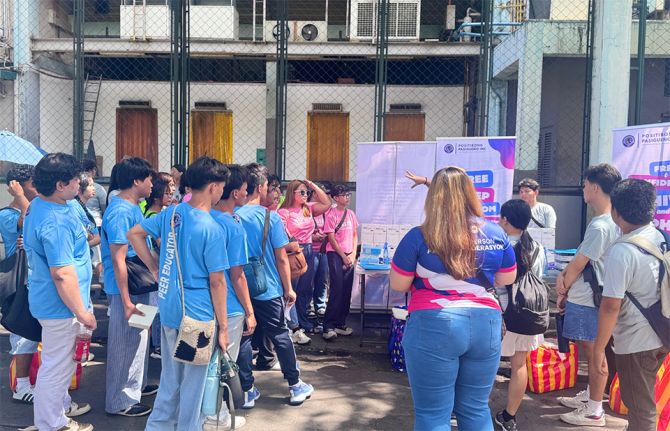
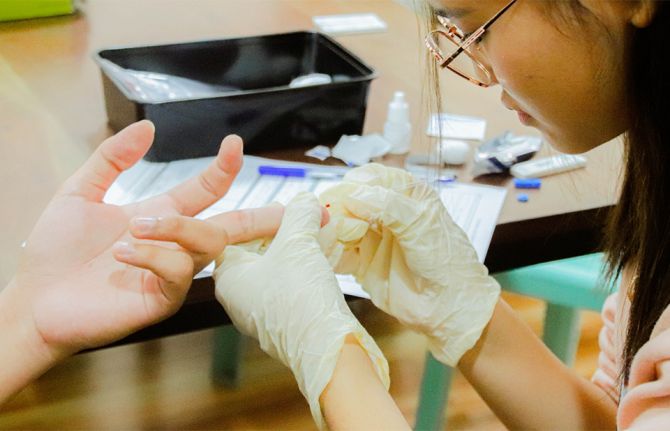
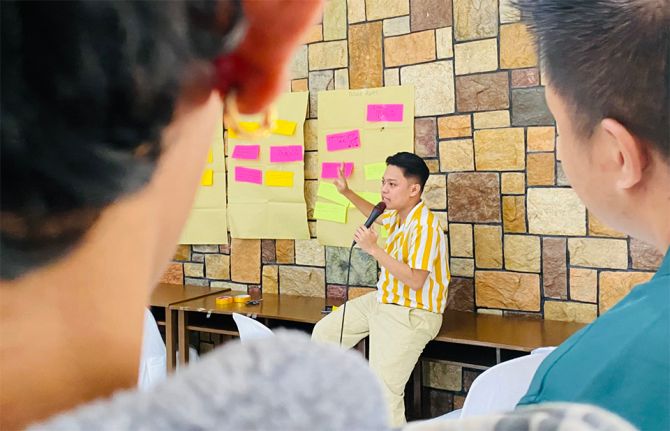
Feature Story
Funding cuts undermine community-led innovations in the Philippines
21 July 2025
21 July 2025 21 July 2025This story was first published in the UNAIDS Global AIDS Update 2025 report.
“We will focus on treatment!” This is the reassurance HIV advocates say they have received from the Government of the Philippines in the aftermath of United States funding cuts to the Philippines HIV response.
These commitments are critical to scale up treatment access for the 60% of people living with HIV in the Philippines who are not currently receiving antiretroviral therapy. But far more is needed to achieve epidemic control in a country that has seen a six-fold increase in new infections since 2010.
In 2024, three to four people were infected with HIV every hour in the Philippines. Of particular concern is that almost half of them are young people aged 15–24 years. Programmes to reach young key populations, especially young gay men and other men who have sex with men, are urgently needed.
“We are seeing a trend where younger and younger people are getting infected,” says Russell Elloso of Network Plus Philippines, the umbrella organization of people living with HIV. “And we are not seeing a plateau—the number of cases is still increasing. That means the current approaches are not working.”
Through PEPFAR, the United States invested primarily in supporting HIV prevention strategies and community-led work to ensure services reached people most in need.
One of the programmes that has been cancelled as a consequence of the funding cuts is the EpiC-supported Free to be YOUTH HUB. This innovative think tank developed culturally resonant HIV prevention and treatment support approaches specifically for young people. It ran 12 projects, including an academy for social media influencers, an innovative approach to HIV education, and a peer-led project to re-enrol youth who had stopped HIV treatment.
“We have a progressive HIV policy in the Philippines and a comprehensive sexual and reproductive health policy, but they are not youth-focused and youth centred,” explains Aaron James Villapando, Co-chair of Free to be YOUTH. “The value of this initiative was having an advisory board focused on promoting a youth-led response. Young people can lead, and we need to be at the frontlines of the HIV response for it to be effective.”
In the aftermath of the funding freeze, the organization has ramped up efforts to engage the private sector and foundations. A key priority has been to work with local government and local youth councils to secure more decentralized and sustainable funding for HIV programmes in the respective provinces. But activists are finding it particularly difficult to secure support for interventions for young key populations.
“Our Secretary of Health has assured the public that they will scale their current initiatives with a goal of not being so dependent on international funding. But the reality is that some of the community-led projects that are most needed are not priorities,” Mr Villapando says.
Stakeholders are lobbying the Department of Health to expand modern prevention methods and community-led service delivery, which were traditionally funded by external donors. These donor investments specifically addressed critical programmatic gaps, including youth programming and increasing access to modern testing and prevention options.
Despite the Government procuring almost all HIV commodities, including PrEP, challenges remain around funding and systems for community-led responses, and the introduction of novel interventions such as long-acting PrEP, the dapivirine vaginal ring and selftesting. Advocates are lobbying policy-makers to develop and implement a social contracting mechanism so the community can continue to provide services without support from the Global Fund to Fight AIDS, Tuberculosis and Malaria (Global Fund) and PEPFAR.
Global AIDS update 2025
Region/country
Related


Feature Story
A lifeline interrupted in Uganda— why community health systems matter
18 July 2025
18 July 2025 18 July 2025This story was first published in the UNAIDS Global AIDS Update 2025 report.
In early 2025, 22-year-old Jokpee Emmanuel arrived at Reach Out Mbuya in Kampala, Uganda, expecting to attend the Friends Forum—a safe space for young people to gather, share and support each other. Instead, he was met with a sign on the gate: “Due to the suspension of United States funding, Reach Out Mbuya will be closed for 90 days. We regret the inconvenience caused.”
The Reach Out Mbuya community health initiative is not just a health facility. It is a lifeline. For years, it served Uganda’s most vulnerable communities, offering care that goes far beyond medicine. For Jokpee, who was born with HIV, Reach Out provided access to antiretroviral therapy, emotional support, school tuition and dignity. “Reach Out was like a second home,” he says. “They did not just give me medicines. They cared for me and reminded me that I am more than my diagnosis. I could live a full life.”
The closure followed a suspension of United States funding through PEPFAR, which had long supported community-led HIV responses in Uganda. The impact was immediate and severe. Community-led and community-based centres such as Reach Out Mbuya are central to public health in many low-resource settings. They offer holistic, personcentred services catered to local realities. They respond to the social, emotional and economic realities of people’s lives. These systems have been essential to the global HIV response, driving down infections and improving quality of services and life, especially among marginalized groups.
Jokpee was forced to seek care at an overcrowded Government facility. He waited six hours, only to be told antiretroviral medicines were out of stock and to return the following week. “A week without antiretroviral medicines! That is how resistance develops. That is how people die,” he says.
He eventually received a one-month supply of medicines, but the fear of another stockout remained. Although the Government of Uganda worked to fill the gap through national health facilities, it could not match the reach or personal connection of community-based programmes.
In the weeks that followed, Reach Out Mbuya managed to reopen, with support from a PEPFAR-funded programme called Kampala HIV Project. Most staff returned, restoring most of the centre’s core services. The number of clients accessing the centre is slowly increasing but is still below previous levels.
Jokpee’s story is a warning. When community-led and -based systems lose support, people fall through the cracks. If it were not for places like Reach Out Mbuya, Jokpee and his peers would be at risk of being left behind in the HIV response.
Sustained investment in community-led responses is the only way forward if we are to end AIDS as a public health threat by 2030.
Global AIDS update 2025
Region/country
Related

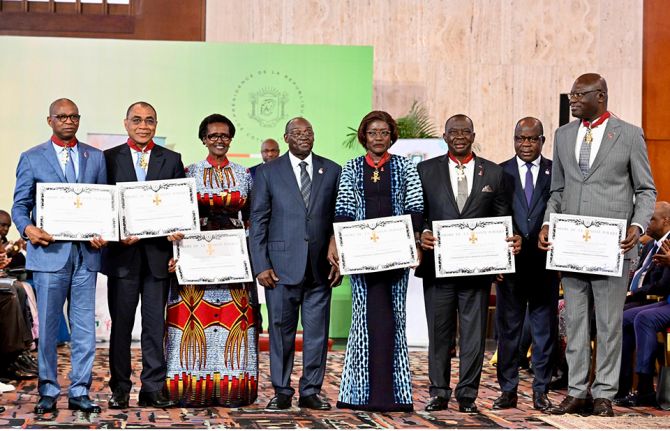
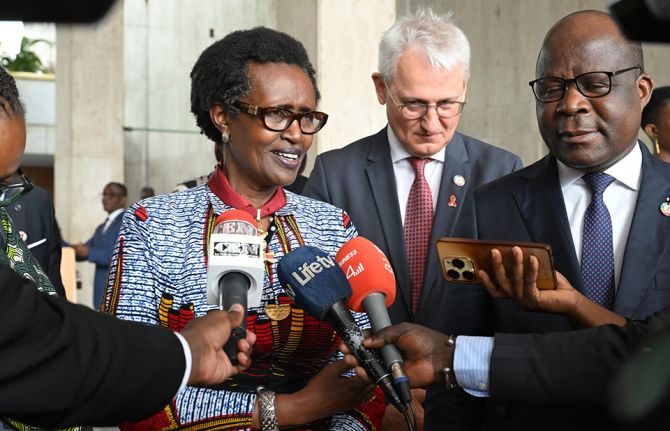
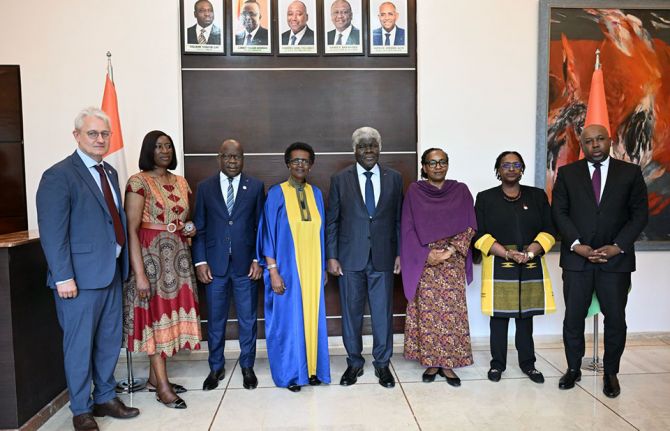
Press Release
UNAIDS commends Côte d’Ivoire’s commitment to increase domestic funding for HIV
24 July 2025 24 July 2025GENEVA/ABIDJAN, 24 July 2025—UNAIDS welcomes the announcement by the government of Côte d’Ivoire to close the funding gap for HIV following cuts from international donors. The Government has committed to invest US$ 60 to 65 million in 2025 and US$ 80 to 85 million from 2026 onwards to maintain critical lifesaving HIV services. These funds are essential to sustain and strengthen the quality of HIV services as part of a nationally owned and led effort to end AIDS in Côte d’Ivoire.
Côte d’Ivoire has been highly dependent on external donor funding for its response to HIV. This announcement represents a monumental shift towards country ownership for a sustainable, long-term commitment to prevent new HIV infections and ensure treatment for all people living with HIV. The government plans to raise the additional funds through increased taxes on goods such as alcohol and tobacco.
“I commend President Ouattara and the government of the Côte d’Ivoire for this bold announcement. It is a prime example of working creatively to ensure that HIV services are not interrupted amidst cuts to donor funding,” said Winnie Byanyima Executive Director of UNAIDS. “The commitment to increase domestic resources is an example to other countries facing funding cuts of how to be creative in mobilizing and allocating resources to ensure continued lifesaving HIV services.”
The government made the announcement during a three-day visit by Ms Byanyima to Côte d’Ivoire between 16 and 18 July. The government reaffirmed the critical role of civil society and communities in the national HIV response, including through domestic resource allocation to strengthen their contribution to the country’s HIV response. It also announced that it would transform the National AIDS Fund into a multi-disease fund, integrate HIV into Universal Health Coverage, primary health care and the broader health system.
Ms Byanyima met with the Prime Minister H.E. Robert Beugré Mambé who said, "Côte d’Ivoire has five priority challenges: women’s vulnerability to HIV and ensuring access to prevention for women and girls; enhancing prevention education for young people; addressing declining donor funding through domestic resources; local scientific research and strategic communication to inform, mobilize and save lives.” He also applauded the long-standing, strategic collaboration with UNAIDS saying, “Thanks to UNAIDS support, Côte d’Ivoire is winning the battle against HIV.”
During her visit, Ms Byanyima participated in the 10th national meeting of the National Programme of the Fight Against AIDS alongside Vice-President Tiémoko Meyliet Koné, who is also the chair of the programme. During the meeting, Ms Byanyima was honored with the title of Commander of the Order of Public Health, the highest distinction of merit in the field of health awarded by the President.
“The bold financial commitment made by Côte d’Ivoire is a powerful example of what political will and national leadership can achieve in the HIV response,” said Ms Byanyima. “Domestic financing is the cornerstone of sustainable health systems, and this decision sends a strong message of national ownership and resilience.”
Ms Byanyima also acknowledged the leadership and critical role of civil society and bilateral support by PEPFAR and international solidarity in the country’s HIV response.
Côte d’Ivoire has made significant progress against the AIDS pandemic, with new infections reduced from 25 000 in 2010 to 8200 in 2024, a fall of 66%. Since 2010, AIDS-related deaths have decreased by 75%, down from 34 000 to 8400 in 2024.
UNAIDS
The Joint United Nations Programme on HIV/AIDS (UNAIDS) leads and inspires the world to achieve its shared vision of zero new HIV infections, zero discrimination and zero AIDS-related deaths. UNAIDS unites the efforts of 11 UN organizations—UNHCR, UNICEF, WFP, UNDP, UNFPA, UNODC, UN Women, ILO, UNESCO, WHO and the World Bank—and works closely with global and national partners towards ending the AIDS epidemic by 2030 as part of the Sustainable Development Goals. Learn more at unaids.org and connect with us on Facebook, Twitter, Instagram and YouTube.
Region/country

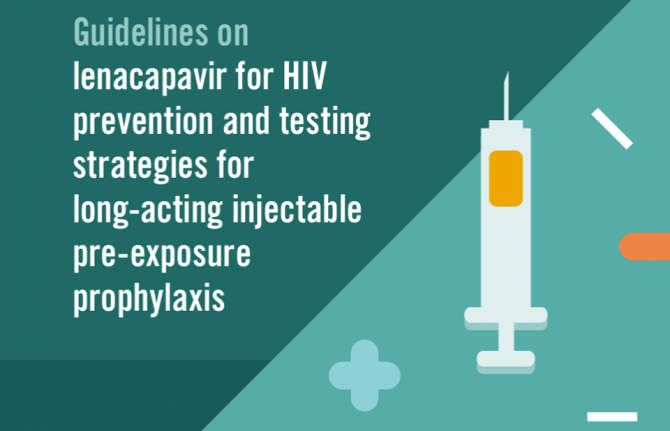
Press Statement
UNAIDS welcomes new WHO guidelines on Lenacapavir
15 July 2025 15 July 2025GENEVA, 15 July 2025–Lenacapavir–a long-acting, six-monthly injectable antiretroviral medicine manufactured by Gilead Sciences–is now recommended by the World Health Organization as an additional HIV prevention choice as part of combination HIV prevention approaches.
Lenacapavir, a new pre-exposure prophylaxis (PrEP) medicine, has the potential to increase the uptake of PrEP and bolster HIV prevention overall as it allows people to choose a method that they prefer. Lenacapvir, administered twice a year, is highly effective at reducing the risk of HIV acquisition.
At a time when funding cuts could lead to an additional 6 million HIV infections and 4 million AIDS-related deaths by 2029, long-acting injectable medicines are a fresh option for all people at risk for HIV--especially those who face higher risk and in locations where the virus is highly prevalent: adolescent women and girls, LGBTQI+ people, sex workers and people who use drugs.
As Gilead has not yet registered Lenacapavir for regulatory approval in all countries, many people, including those facing disproportionate risk for HIV, may have to wait longer than others to access this life-saving tool.
Transparency in production costs and pricing strategies is fundamental to removing some market barriers to universal access to innovative products. UNAIDS remains committed to ensuring full transparency from originator pharmaceutical companies regarding how much health technologies cost to produce and at what level they are priced. Lenacapavir is no exception. Research shows that Lenacapavir can be produced at a thousand times less than its US price. Dozens of developing countries have been excluded from the licenses for generic Lenacapavir and for cabotegravir (another long-acting injectable antiretroviral for HIV manufactured by ViiV Healthcare).
The volume of Lenacapavir must be scaled up – but to do so, we need accessibility and affordable prices. Lenacapvir’s limited availability and unaffordable price not only threatens lives, it also undermines the potential positive impact Lenacapavir could have on the AIDS pandemic. Significant funding cuts to foreign assistance for HIV have plunged the global response into crisis. In addition to viral suppression among people living with HIV, ensuring broad, rapid and affordable dissemination of this new health technology would hasten the decline of new HIV infection rates and would help limit the scope of the pandemic; essential, especially in a moment of constrained resources.
UNAIDS urges Gilead to swiftly register Lenacapavir for regulatory approval in all low- and middle-income countries - starting with those with the highest HIV incidence - and to ensure affordable access for everyone who could benefit, wherever they live. UNAIDS also encourages countries to prioritize prevention options that deliver impact and use simplified and differentiated delivery of prevention services to reach those in need.
There is no more time to waste. Governments, civil society, and the private sector need to take all steps necessary to enable equitable, global access to new health technologies for HIV such as Lenacapavir and Cabotegravir - and UNAIDS is here to support them.
UNAIDS
The Joint United Nations Programme on HIV/AIDS (UNAIDS) leads and inspires the world to achieve its shared vision of zero new HIV infections, zero discrimination and zero AIDS-related deaths. UNAIDS unites the efforts of 11 UN organizations—UNHCR, UNICEF, WFP, UNDP, UNFPA, UNODC, UN Women, ILO, UNESCO, WHO and the World Bank—and works closely with global and national partners towards ending the AIDS epidemic by 2030 as part of the Sustainable Development Goals. Learn more at unaids.org and connect with us on Facebook, Twitter, Instagram and YouTube.

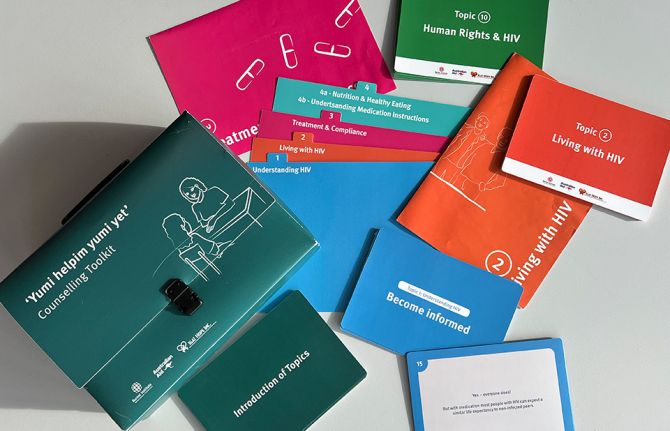
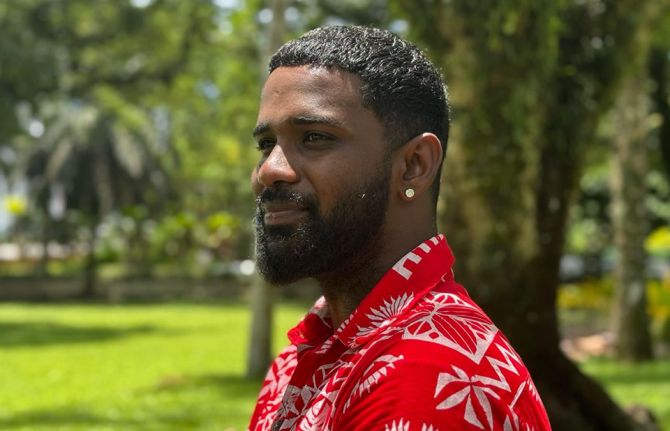
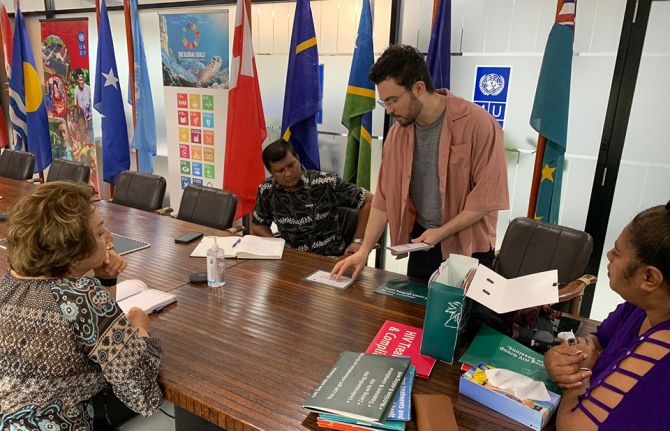
Feature Story
Crowdfunding for community-led services in Fiji’s fast growing HIV epidemic
14 July 2025
14 July 2025 14 July 2025“There is no such thing as peer support here,” says Mark Shaheel Lal, founder of Living Positive Fiji. “We are starting from zero.”
When other parts of the world were wrestling with soaring HIV rates during the 1990s and early 2000s, Fiji was hardly affected. With a population of under one million, HIV remained under the radar in the South Pacific island chain.
But there has been an exponential increase in recent years. Since 2014, the number of new HIV infections in Fiji has risen ten-fold. Last year the number of newly diagnosed people tripled from 2023 levels
In January the Government of Fiji declared an HIV outbreak in response to the sharp increase in new diagnoses. Although its HIV Surge Strategy seeks to rapidly expand HIV testing and treatment, most people still aren’t accessing the services they need.
Last year just a quarter of people living with HIV in Fiji were receiving antiretroviral therapy. Concerningly, a third of those who have been diagnosed are not on treatment.
Mr Lal is among a group of stakeholders that is working not only to spread the word that HIV medicines work, but to support people to access care. He is also among the few people living openly with HIV in Fiji.
“There is this idea that you come from a small island and everyone knows each other, so the stigma here is high. I want to help reduce that,” he explains.
Dean Cassano is a Senior International Health Project Officer at Burnet Institute, an Australian public health research organization with a focus on underserved communities.
“The intervention we are proposing is a community-led response and what that looks like is peers counselling other peers. Somebody living with HIV is enabled, trained and mentored with the skills and methodology to counsel other people living with HIV. The core objective is to improve treatment adherence,” Mr Cassano explains. “We know that when someone talks to a peer they can ask about misconceptions, fears, advice on how to have a baby or how to tell a partner. They would be getting holistic support, so they know there is a way through.”
At present, people who learn they are HIV-positive in Fiji are referred to one of three sexual health clinics. Many simply never show up.
“They are too embarrassed… too scared,” Mr Lal says.
The new approach would immediately introduce newly diagnosed people to a peer counsellor. Peer counsellors would also play a key role in supporting clients as they access treatment, contact tracing, and reaching out to those who have stopped coming to the clinic.
The Institute had worked on an HIV Peer Counselling Toolkit for neighboring Papua New Guinea (PNG) where new infections are also rising dramatically. Together with Igat Hope, PNG’s main people living with HIV organization, they developed culturally specific modules. The Australian Government funded this initiative as part of the Sexual Reproductive Health Integration Project.
“There are ten topics that someone newly diagnosed with HIV needs to know about how to live well,” Mr Cassano explains.
Burnet has collaborated with partners in Fiji to adapt the toolkit, for example including local specifics in sections on food and alcohol. Fiji requires an additional module on harm reduction. Among newly diagnosed people who are currently receiving antiretroviral therapy, half contracted HIV through injecting drug use.
Now comes the next step—mobilizing and training these peer counselors. With no resources immediately available, the partners raised more than AUD$146000 through a crowdfunding campaign which ended in June. Now the training begins.
“This began as a result of us seeing a need and hearing from local partners that they want this but realizing that there is no money. The long-term plan is that this peer support is embedded into the national HIV response and is a core tenet for post-diagnosis support. Our hope is that it is sustained but first it must start,” Mr Cassano said.

